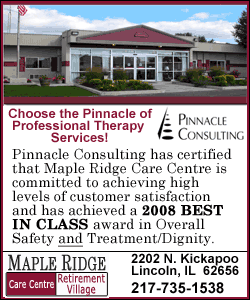|
 The study by the Centers for Disease Control and Prevention is the first comprehensive national look at the role brain injuries play in fatal elderly falls. It examined 16,000 deaths in 2005 that listed unintentional falls as an underlying cause of death. The study by the Centers for Disease Control and Prevention is the first comprehensive national look at the role brain injuries play in fatal elderly falls. It examined 16,000 deaths in 2005 that listed unintentional falls as an underlying cause of death.
CDC researchers found that slightly more than half of the deaths were attributed to brain injuries. The other deaths were due to a variety of causes including heart failure, strokes, infections and existing chronic conditions worsened by a broken hip or other injuries sustained in a fall.
"A lot of people don't think a fall is serious unless they broke a bone, they don't think it's serious unless they break a hip. They don't worry about their head," said Pat Flemming, a senior physical therapist and researcher at Vanderbilt University

Each year, one in three Americans age 65 and older fall. About 30 percent of such falls require medical treatment.
Previous CDC research showed that the U.S. death rate from falling has risen dramatically
-- about 55 percent -- for the elderly since the 1990s. The new study highlights the role that brain injuries play in such deaths.

As people age, veins and arteries can be more easily torn during a sudden blow or jolt to the head, said Marlena Wald, a CDC epidemiologist who co-authored the study.
That can cause a fatal brain bleed. Other factors can contribute, such as the use of blood-thinners, said Judy Stevens, another CDC researcher and co-author.
The severity of brain injuries isn't always immediately apparent, and
some people may not lose consciousness. Wald noted a scenario seen in
hospitals in which an elderly fall victim comes in alert and talking, but
dies an hour or two later.
[to top of second column]
 |

The study also found that deaths and hospitalization rates for
fall-related brain injuries increased with age. Brain injuries
accounted for about 8 percent of hospital stays for non-fatal falls.
There are several steps older Americans can take to try to
prevent falls. Exercise can increase leg strength and balance.
Glasses or other vision correction measures can help people avoid
obstacles. And being careful with the use of drugs that can affect
thinking and coordination -- such as tranquilizers and sleeping pills
-- can also make a difference.
"Falls are not an inevitable consequence of aging. These head
injuries are not inevitable, either," Wald said.
The research is being published in the June issue of a scientific
publication, the Journal of Safety Research.
___
On the Net:
The CDC: http://www.cdc.gov/injury/
[Associated
Press; By MIKE STOBBE]
Copyright 2008 The Associated
Press. All rights reserved. This material may not be published,
broadcast, rewritten or redistributed.

 |